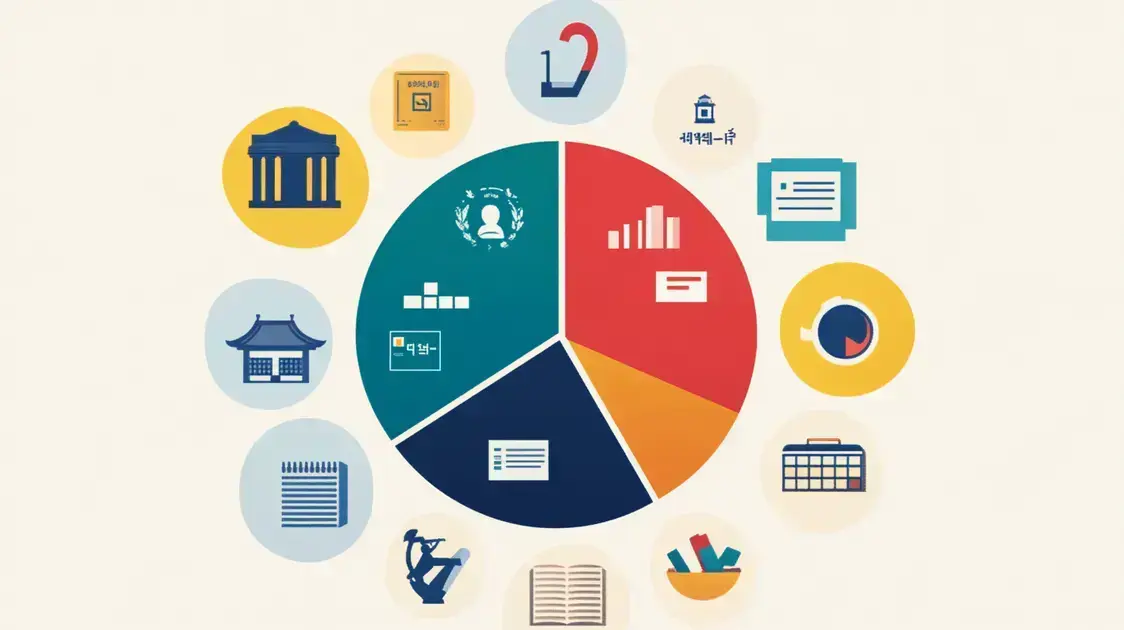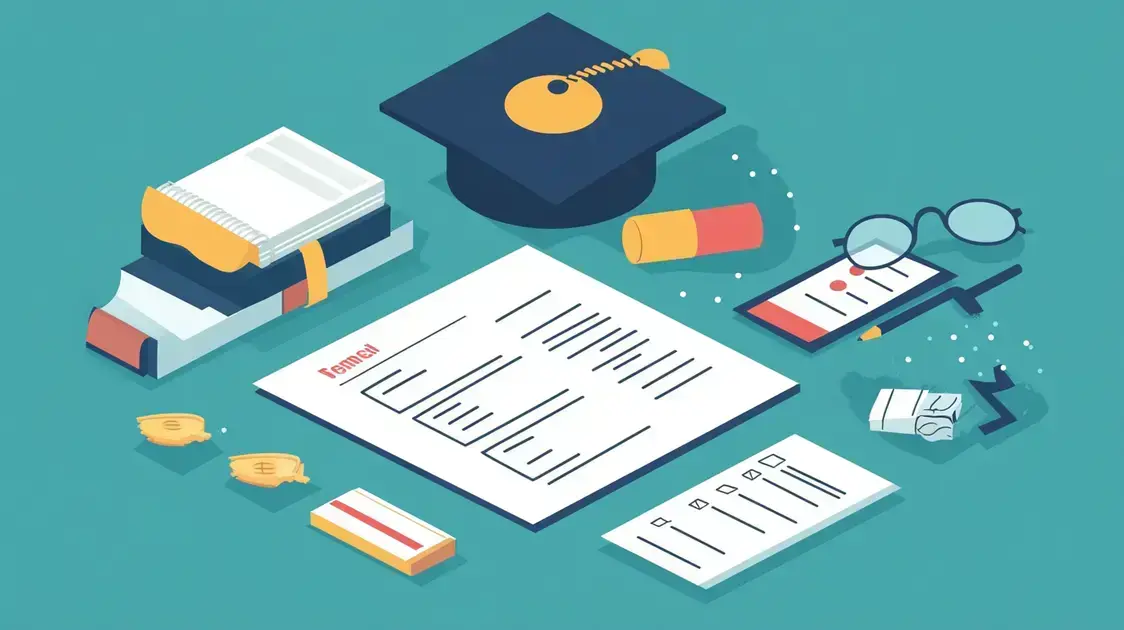If you’re a foreign student dreaming of studying in South Korea, a Korean student loan for foreigner could be your ticket to success.
With numerous universities offering programs in English, it’s easier than ever for international students to access high-quality education.
In this article, we’ll delve into the types of loans available, eligibility requirements, and the application process to help make your study abroad experience a reality.
Understanding Korean Student Loan for Foreigner
Understanding Korean student loans for foreigners is essential for those aspiring to study in South Korea. These loans are designed to help international students cover their tuition fees and other educational expenses during their stay. However, it’s important to be aware of how these loans work and what you need to qualify.
What Are Korean Student Loans?
Korean student loans are financial aids provided by international banks and some Korean banks. They assist foreign students in managing their education costs while studying in Korea. Loans can cover various expenses, including tuition fees, accommodation, and daily living costs.
Loan Features
Most loans for foreign students come with specific features, such as:
- Interest Rates: Generally competitive, varying based on the lender and the borrower’s profile.
- Repayment Periods: Usually flexible, allowing students to start repayments after graduation.
- Loan Amounts: Typically range between a few hundred to several thousand dollars based on individual needs.
Understanding these features helps students identify the right financial product that suits their requirements.
Where to Apply
Foreign students can start by checking with their home country’s bank for any available loan options. Additionally, Korean banks like KEB Hana Bank or Shinhan Bank also offer loans specifically designed for international students. Many universities also provide financial guidance and resources on available loans.
Important Considerations
It’s crucial for students to consider the loan terms carefully. Ensure that you understand the interest rates, repayment schedules, and any other fees involved. Consulting with a financial advisor or the university’s financial aid office can help clarify complex information.
By understanding the options available for Korean student loans for foreigners, students can take significant steps toward funding their education in South Korea and achieving their academic and career goals.
Eligibility Requirements for Foreign Applicants
If you are a foreign applicant wishing to apply for a Korean student loan, it’s essential to meet certain eligibility requirements. These requirements ensure that you qualify for the financial support you need while studying in South Korea.
Basic Eligibility Criteria
Here are the common eligibility criteria you must meet:
- Enrollment Status: You must be enrolled in a recognized higher education institution in South Korea. This includes universities, colleges, and vocational schools.
- Residency: Typically, applicants must have a valid student visa for Korea. This shows your commitment to staying in the country for your studies.
- Age Limit: Some lenders may have age limits. Generally, you should be between 18 and 35 years old.
Academic Requirements
Maintaining a good academic record is also vital for eligibility:
- Minimum GPA: Most lenders require that you maintain a minimum GPA, usually around 2.0 or higher on a 4.0 scale.
- Proof of Enrollment: You may need to provide documents proving your enrollment status, such as admission letters or registration forms.
Financial Criteria
Financial stability is often assessed to determine eligibility:
- Income Proof: Some lenders may require proof of income or financial support from a guardian or sponsor to ensure you can cover living costs.
- Credit History: While foreign students usually do not have a credit history in Korea, lenders may perform a credit check in your home country.
Documents Needed
Before applying, gather necessary documents, which typically include:
- Your passport and visa.
- Academic transcripts or certificates.
- Proof of enrollment from your institution.
- Financial documents demonstrating your ability to repay the loan.
By ensuring you meet these eligibility requirements, you will increase your chances of securing a Korean student loan and pave the way for your educational journey in South Korea.
Types of Loans Available for Foreign Students

For foreign students planning to study in South Korea, a variety of loan options are available to help manage educational expenses. Understanding the different types of loans available for foreign students can allow you to make an informed decision based on your financial needs.
1. Government-Sponsored Loans
These loans are typically offered by the South Korean government to support international students. They often feature:
- Low Interest Rates: These loans come with competitive rates.
- Flexible Repayment Plans: Options may include deferred repayment until after graduation.
2. Bank Loans
Many local banks in South Korea offer loans specifically for foreign students:
- Standard Bank Loans: These are conventional loans available to students who meet specific banking criteria.
- Student-Specific Loans: Certain banks offer loans exclusively designed for students, which may have more relaxed terms.
3. Private Loans
Private loan options are also available from financial institutions outside of Korea:
- Private Lenders: Organizations that specialize in educational loans often provide borrowers with competitive rates.
- Peer-to-Peer Loans: Platforms that connect students directly with individual lenders can sometimes offer flexible terms.
4. University Financial Aid
Many institutions provide their own financial support programs:
- Institutional Loans: These are loans directly from the university, often with favorable terms.
- Scholarship Programs: Some schools offer scholarships that can be applied to student loans, reducing overall debt.
5. International Student Loans
These loans are targeted specifically at non-Korean residents:
- Global Lenders: Many global financial institutions offer loans for foreign students studying overseas.
- Currency Considerations: Loans may be provided in your home currency or Korean won.
Knowing the different types of loans available will help you select the best financial solution for your studies in South Korea.
Application Process for Korean Student Loans
The application process for Korean student loans can be straightforward if you follow the right steps. Knowing what to expect will help you secure the funding you need for your education.
1. Prepare Your Documents
Before starting your application, gather the necessary documents:
- Your passport, along with a copy of your student visa.
- Proof of enrollment or admission letter from your Korean educational institution.
- Academic transcripts and certificates to show your qualifications.
- Financial documents, including income proof, bank statements, or sponsorship letters.
2. Research Loan Options
Identify the types of loans you are eligible for and compare them:
- Look into government-sponsored loans, bank loans, and private financial aid options.
- Determine the interest rates, repayment plans, and any fees involved.
3. Fill Out the Application Form
Once you have chosen a loan, fill out the application form accurately:
- Be sure to provide all the required information, including personal details and financial background.
- Double-check for any errors or incomplete sections before submitting.
4. Submit Your Application
After completing the form, it’s time to submit your application:
- You can usually apply online through the lender’s website or submit a physical application at a local bank branch.
- Keep a copy of your application for your records.
5. Wait for Approval
After submitting, you will need to wait for the lender to process your application:
- Approval times can vary, so check with your lender for estimated time frames.
- Be ready to provide additional information if requested.
6. Review Loan Terms
Once approved, carefully read through the loan agreement:
- Understand the interest rates, repayment period, and any conditions tied to the loan.
- Don’t hesitate to ask the lender any questions for clarification.
7. Disbursement of Funds
After accepting the terms and conditions, you can receive your loan funds:
- Funds may be sent directly to your educational institution or paid out to you for personal expenses.
- Ensure that you understand how and when the disbursement will occur.
Following these steps will help streamline the application process for Korean student loans and support your educational journey in South Korea.
Repayment Options for Korean Student Loans
Understanding the repayment options for Korean student loans is essential for managing your finances after graduation. Different lenders may offer various plans to accommodate your financial situation once your studies are complete.
1. Standard Repayment Plan
This is the most common option:
- You pay a fixed amount each month for a set period, typically between 10 to 15 years.
- Monthly payments are calculated based on your total loan amount and interest rate.
2. Income-Driven Repayment Plan
This plan adjusts your monthly payment based on your income:
- Your payments can be set at a percentage of your discretionary income.
- Usually, these plans are designed to extend your repayment period, which can lower monthly payments.
3. Graduated Repayment Plan
With a graduated plan, payments start lower and increase over time:
- Payments may rise every two years for a predetermined period.
- This option can be beneficial if you expect your income to increase after graduation.
4. Deferment and Forbearance
If you face financial hardship, you may be eligible for deferment or forbearance:
- Deferment: Temporarily stops your payments, and interest may not accrue during this time.
- Forbearance: Allows you to pause payments, but interest continues to accrue.
5. Loan Forgiveness Programs
In certain cases, you may qualify for loan forgiveness:
- Public service jobs or specific fields may offer forgiveness after a certain period of on-time payments.
- Research eligibility for programs that align with your career aspirations.
6. Early Repayment Options
If you wish to pay off your loan sooner, many lenders allow early repayment:
- Be sure to check for any prepayment penalties before making extra payments.
- Paying off the loan early can save you money on interest in the long run.
Carefully reviewing all repayment options will help you choose the plan that best fits your financial situation as you transition from student life to your professional career.
Tips for Securing Financial Aid as a Foreigner

Securing financial aid as a foreigner can sometimes be challenging, but there are effective tips to improve your chances. Here are some important strategies to consider:
1. Start Early
Begin your search for financial aid as soon as you decide to study in Korea:
- Apply for scholarships and loans ahead of deadlines to give yourself the best chance.
- Research opportunities well before your chosen enrollment date.
2. Understand Your Options
Familiarize yourself with the various types of financial aid available:
- Look into scholarships, grants, and loans offered by both Korean institutions and your home country.
- Check specific requirements for each type of aid to ensure you meet them.
3. Gather Proper Documents
Having the right documents prepared can make a huge difference:
- Collect transcripts, letters of recommendation, and proof of income early.
- Make sure all documents are translated into Korean or English if needed.
4. Craft a Strong Application
Your application should highlight your strengths:
- Write a compelling personal statement that explains your goals and reasons for studying in Korea.
- Make sure to tailor your application to each financial aid program.
5. Seek Guidance and Support
Don’t hesitate to ask for help:
- Consult your university’s financial aid office for resources and workshops.
- Connect with current students or alumni who can share their experiences and advice.
6. Network with Organizations
Building connections can offer access to hidden opportunities:
- Join student organizations, forums, or social media groups centered around studying in Korea.
- Engage with organizations that support international students and financial aid.
7. Maintain Good Academic Standing
Keeping high grades can help retain scholarships and loans:
- Stay focused on your studies to meet any GPA requirements associated with your financial aid.
- This also enhances your overall chances for future opportunities.
By following these tips for securing financial aid as a foreigner, you can significantly improve your ability to finance your education in South Korea and pave the way for your successful academic journey.
Common Mistakes to Avoid When Applying
When applying for a Korean student loan, avoiding common mistakes can greatly improve your chances of success. Here are some errors to watch out for:
1. Missing Deadlines
One of the most crucial mistakes is not keeping track of application deadlines:
- Mark important dates clearly on your calendar.
- Start your application early to ensure you have enough time to gather documents.
2. Incomplete Applications
Submitting an incomplete application can lead to automatic disqualification:
- Review the application checklist provided by your lender.
- Double-check that all required documents are included before submission.
3. Poorly Written Personal Statements
Your personal statement is a chance to stand out:
- Avoid generic or vague content; be specific about your goals and motivations.
- Proofread to eliminate errors in grammar and spelling.
4. Not Seeking Help
Many applicants fail to seek assistance when needed:
- If you’re confused about any part of the application, don’t hesitate to ask your school’s financial aid office for help.
- Talk to current students or alumni to get tips and insights.
5. Ignoring Eligibility Requirements
Ensure you fully understand eligibility criteria:
- Check if you meet age, enrollment, and residency requirements before applying.
- Do not apply for loans you are not eligible for, as this will waste time and effort.
6. Failing to Compare Loan Options
Not researching different loans can lead to financial mistakes:
- Look at interest rates, repayment terms, and benefits of various loans.
- Choose the option that best fits your financial needs.
7. Underestimating Financial Obligations
Many applicants do not calculate their total cost of living:
- Factor in tuition, housing, food, and other expenses when applying for a loan.
- Borrow only what you need to minimize debt.
By avoiding these common mistakes when applying for Korean student loans, you can enhance your chances of receiving the financial support necessary to pursue your studies.
In Conclusion: Unlocking Your Dream Education in Korea
Securing a Korean student loan for foreigners is an essential step toward achieving your academic goals in South Korea. By understanding the various types of loans available and the application process, you can effectively navigate this journey.
It’s crucial to avoid common pitfalls that could hinder your financial aid efforts. Starting early, preparing your documents, and carefully reviewing your options can make a significant difference.
With the right strategies and knowledge, you can access the funding necessary to fuel your education and build a successful future. Embrace the opportunities that studying in Korea offers, and take the steps needed to make your educational dreams a reality.


